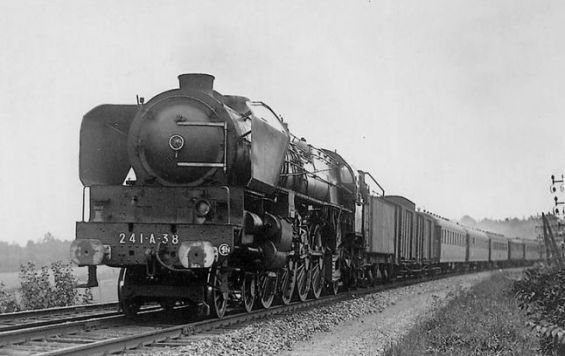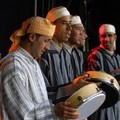Opposition to the French control has been through several stages before Morocco was claimed independent. After forcing Sultan Mohammed Ben Youssef and his family into exile in August 1953, the French Protectorate in the Kingdom faced a number of armed attacks lead by the national resistance movement and violence rose, demanding the return of the Sultan.
The first operation targeting the Casablanca-Algiers train
One day after announcing the exile of the Alaouite sultan, young Moroccans in Kenitra tried to take revenge. Based on the account published on Miloud Mouassaoui’s official Facebook page, a Moroccan resistant, in August the 23rd, 1953, members of «the Freedom cell», decided to carry out an attack targeting the Casablanca-Algiers train.
«The cell loosened the railway's track and spread them by about thirty centimeters, which made the train coming from Algeria crash leaving behind material losses and casualties including soldiers (…) Following this attack, the general residence of the French Protectorate conducted a campaign arresting members of the national resistance movement including the cell of Miloud Moussaoui. The latter appeared before the Casablanca Military Court and was sentenced to eight years in prison with hard labor».
The targeted train, was carrying French officers who had come to attend the installation of Mohamed Ben Afra, a distant relative of Sultan Mohammed Ben Youssef who was put by the French. Vandalizing the train and causing huge casualties all while being a small commando pushed the colonizer to reconsider the way it was looking at the national resistance movement in Morocco. For the latter, the operation was an encouraging achievement to keep fighting for freedom.

On the night before the 7th of November, Mohamed Zerktouni and members of his secret organization decided to bomb the railway linking Casablanca to Algiers. Everything was well studied to carry out this attack, the equipments, the people who will do it and the full instructions.
Several people were killed and about ten others wounded
In April 2009, El Hoceine El Araeychi told Al Alam newspaper about the first steps of the operation. «After a series of successful raids, it was decided to hit harder. Thus, the Casablanca-Algiers train was chosen. Two bombs were put in bags», he said.

On the day of the operation, Saturday 7th of November, Mohamed Zerktouni, Mohamed Mansour, Mohamed Sekkouri and Hassan El Araeychi were dropped by Mohamed Ajarn, aka Said Bouniilate, at the Casablanca station. Two train tickets were purchased, one for a first class trip and another for a second cla one. In the seventh volume of the book «Mémoires du patrimoine marocain» (Edition Nord Organization, 1986), Mohamed Mansour, who dropped one the bombs, speaks about how the two men had to set off the bombs. They exploded at the railway tunnel located under the city of Rabat and which leads to Salé.
«I was seated in the train's first class, while Sekkouri (Mohamed, ed) went to the second class section. As soon as the train arrived in the Rabat city station, we headed to the toilets to prepare the two bombs (...) the detonators were placed in such a way that the bombs exploded when the train was crossing the tunnel rail heading to Salé or Bouregreg».
Meanwhile, the two men left the train in Rabat. Said Bouniîlate who was waiting for them in his car not far from the railway station to return to Casablanca, as reported by Mohamed Daher in Al Ittihad Al Ichtiraki newspaper. Mohamed Zerktouni and Hassan El Araeychi spent the night in Rabat to learn about the results of their attack.
On the 8th of November 1953, French media outlets published special issues on th explosion of the train linking Morocco to Algeria. According to El Hoceine El Araeychi, seven people were killed in the attack and a dozen were wounded while Mohamed Daher spoke about 11 dead and 15 injured. Both sources however mentioned the colossal loss estimated at 100 million Francs.





 chargement...
chargement...













